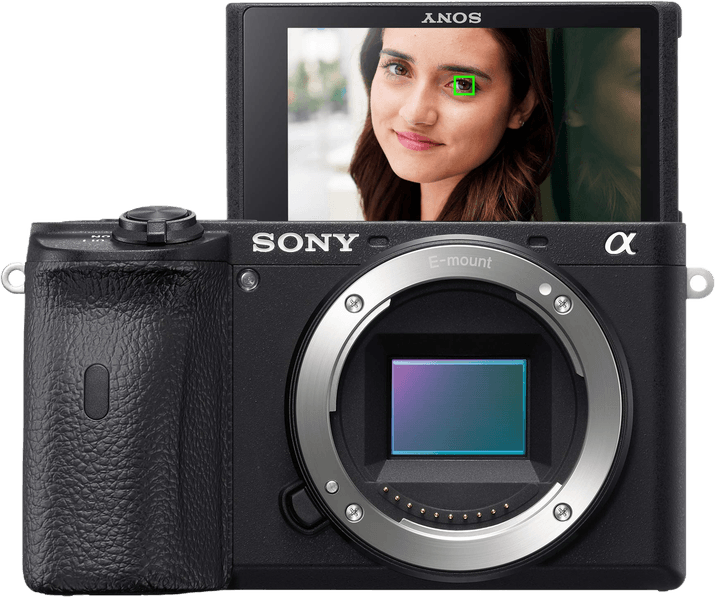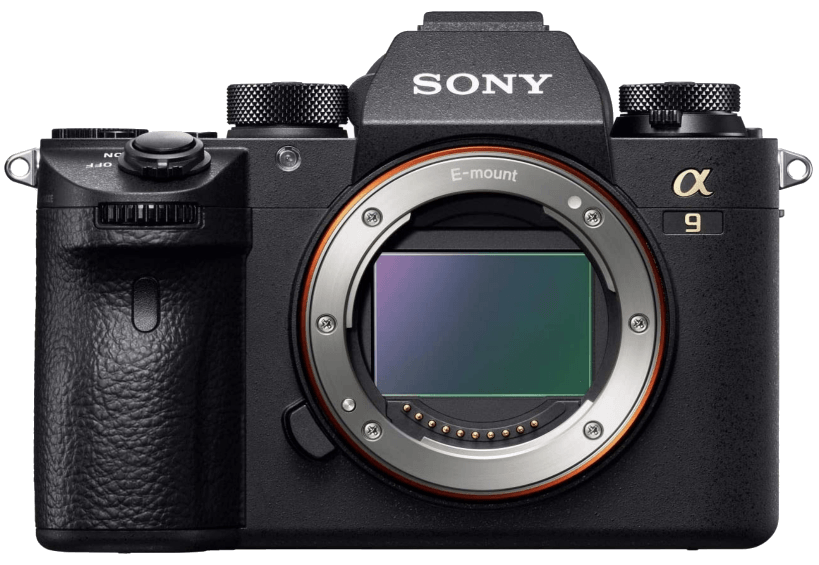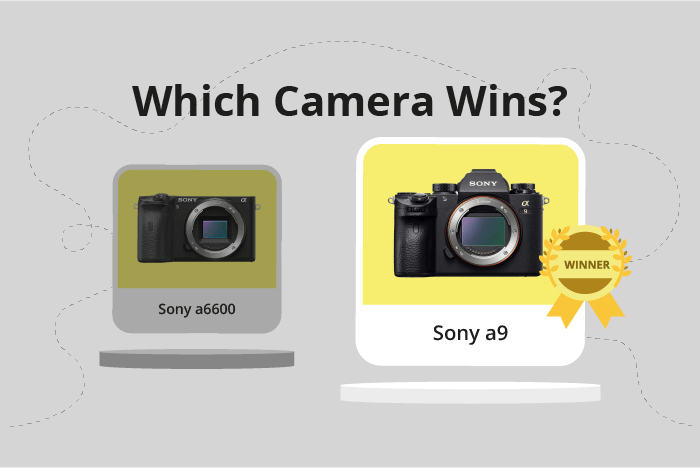Sony a6600 vs a9 Comparison
Sony a6600

Sony a9

The Sony a9 outshines the Sony a6600 with a score of 80/100 compared to 75/100. Both cameras are mirrorless and share similarities in specifications. They were released in 2017 and 2019 respectively, with the a9 being the more expensive option at $4500, while the a6600 costs $1200.
The Sony a9 excels with its superior performance and features, justifying its higher price. On the other hand, the Sony a6600 has its advantages, such as being lighter at 503g compared to the a9’s 673g, and having a smaller body size of 120 x 67 x 69mm versus the a9’s 127 x 96 x 63mm.
When considering these factors, the Sony a9 is the better camera for professionals who require top-notch performance, while the Sony a6600 is a more affordable and portable option for casual users or beginners.
Sony a6600 vs a9 Overview and Optics
The Sony a9 wins in optics with a score of 81/100, compared to the Sony a6600’s 76/100. Both cameras share several specifications, such as a 24.2-megapixel resolution, CMOS sensor type, Bionz X processor, and image stabilization. Additionally, they both have Sony lens mounts: the a6600 uses the Sony E mount, while the a9 utilizes the Sony FE mount.
The Sony a9’s higher score is due to its superior shooting speed and sensor performance. With a shooting speed of 20 frames per second, the a9 is faster than the a6600’s 11 frames per second. The a9’s DXOMARK sensor score is 92, which is significantly higher than the a6600’s score of 82. Furthermore, the a9 has a full-frame sensor size, while the a6600 has an APS-C sensor size. This difference in sensor size contributes to the a9’s better overall image quality.
On the other hand, the Sony a6600 is not without its merits. The camera’s APS-C sensor size and Sony E lens mount make it compatible with a wider range of lenses, including those designed for crop-sensor cameras. This compatibility can be advantageous for users who already own or plan to invest in these lenses.
Taking all factors into consideration, the Sony a9’s superior shooting speed, sensor performance, and full-frame sensor size make it the better choice for photographers seeking top-tier optics. However, the Sony a6600 may be a more suitable option for those who prioritize lens compatibility and affordability, without compromising on image quality.
Sony a6600 vs a9 Video Performance
The Sony a6600 outperforms the Sony a9 in video capabilities, scoring a remarkable 91 out of 100, while the a9 falls behind with a score of 56. Both cameras boast a 4K maximum video resolution and 3840 x 2160 video dimensions, providing sharp and detailed footage. However, the a6600 demonstrates superiority in other aspects.
The a6600 excels with a higher maximum video frame rate of 100fps, double that of the a9’s 30fps. This advantage allows the a6600 to capture smoother motion, making it ideal for recording fast-paced action or for creating slow-motion effects in post-production. Furthermore, the a6600 comes with built-in time-lapse functionality, offering creative options for photographers and videographers to showcase the passage of time in their projects.
Despite its lower score, the a9 still maintains quality video output with its 4K resolution and 3840 x 2160 dimensions. However, the camera’s lower frame rate and lack of built-in time-lapse features limit its video capabilities compared to the a6600.
Considering the significant differences in video scores and features, the Sony a6600 emerges as the superior choice for those prioritizing video capabilities. Its higher frame rate and built-in time-lapse function provide greater creative flexibility, while its 4K resolution and video dimensions match those of the a9. While the a9 still offers quality video output, it falls short in comparison to the a6600’s advanced video performance.
Sony a6600 vs a9 Features and Benefits
The Sony a9 emerges as the winner in this comparison with a feature score of 83/100, slightly ahead of the Sony a6600 which scores 81/100. Both cameras share several specifications, including a 3-inch screen size, touchscreen functionality, flip screen, absence of GPS, and the presence of WIFI and Bluetooth connectivity.
The winning camera, the Sony a9, outperforms the Sony a6600 in terms of screen resolution, boasting 1,440,000 dots compared to the a6600’s 921,600 dots. This higher resolution offers a clearer and more detailed display for users, enhancing their shooting experience.
However, the Sony a6600 does not lag far behind and still presents itself as a strong contender. Although the differences in features between the two cameras are minimal, the a6600 may have other advantages in terms of price, size, or weight that could make it a more suitable choice for certain users.
Taking into account the feature scores and shared specifications, both the Sony a9 and Sony a6600 are high-quality cameras with similar capabilities. The Sony a9 holds a slight edge with its superior screen resolution, but potential buyers should also consider factors such as price, size, and weight when making their final decision. Ultimately, the choice between these two cameras will depend on the individual’s preferences and requirements.
Sony a6600 vs a9 Storage and Battery
The Sony a9 outperforms the Sony a6600 in storage and battery with a score of 65/100 compared to the a6600’s 48/100. Both cameras share the same battery type, NP-FZ100, and accept SD, SDHC, and SDXC memory cards. However, the a9 holds an advantage with two memory card slots and compatibility with UHS-II SD cards.
The a6600 excels in battery life, offering 810 shots per charge, while the a9 provides 650 shots. Additionally, the a6600 supports USB charging, giving users more flexibility in charging options.
Despite the a6600’s superior battery life and USB charging, the a9’s dual memory card slots and UHS-II compatibility give it an edge in storage capabilities. The Sony a9 is the better choice for those prioritizing storage and battery, but the a6600 remains a strong contender with its longer battery life and convenient charging options.
Sony a6600 vs a9 – Our Verdict
Are you still undecided about which camera is right for you? Have a look at these popular comparisons that feature the Sony a6600 or the Sony a9:

